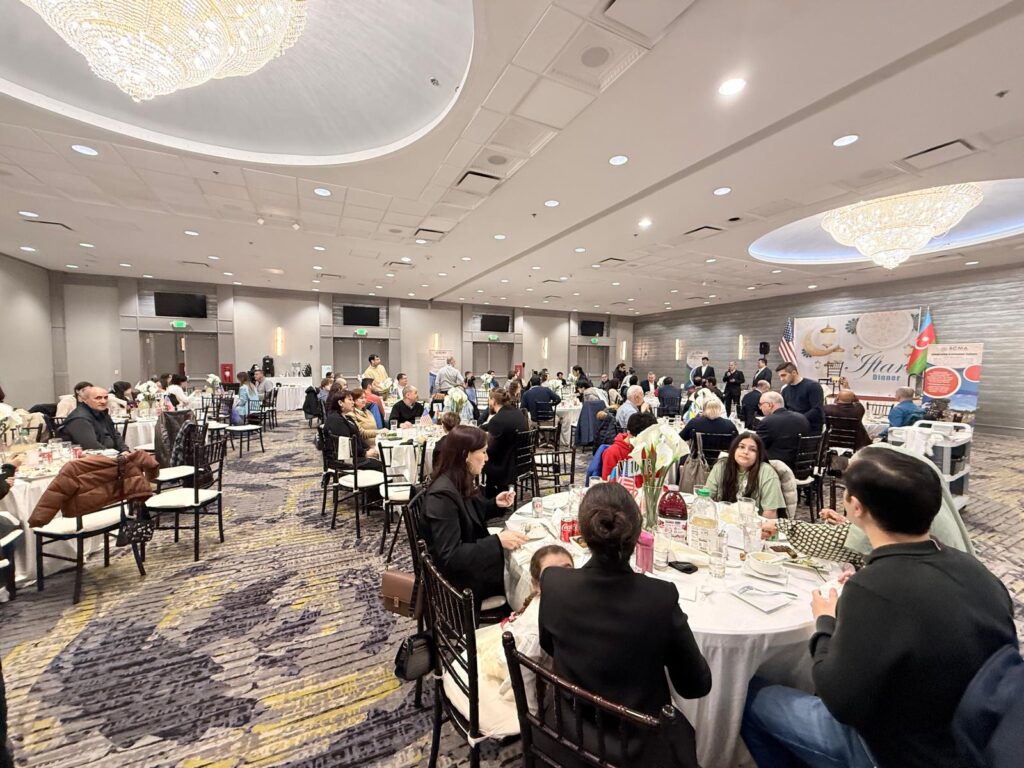Karabakh Cuisine
Karabakh kyata
Yeast is melted in warm water, 13 x gr. flour is added, and a little salt is added, too. All are mixed and put in a warm place for fermentation for 0.5 hours. The fermented mixture is poured into a large pan, and butter, sugar, eggs, a pinch of vanilla and salt are added to the mixture. Then flour is added and mixed and kept for 1,5-2 hours. During this period the filling of kyata is prepared: the chilled butter mixed well with sugar powder, and then vanilla and flour are added. From ready pastry 10 paste balls of fist size are prepared. A Round cookie of 7-8 cm diameter is prepared from each paste balls. Filling is put in middle of dough and is rolled as loaf. The surface of kyata is decorated and cooked at 200-220C for 20 minutes.
Kallapacha
By plucking the sheep’s head, feet on fire or tandir, it’s necessary to clean it, pull out the nails and divide into two parts. The abdomen of the sheep is slightly boiled in hot water and then cleaned. Then the skull is crushed and the brain is taken out, the tongue is cut from the bottom, each half of the skull is divided in 3-4 parts. The abdomen cleaned and washed in hot water is boiled slightly in hot water and the inner side is cleaned by scratching with knife and is cut for 30-40 gr. pieces. The skull and feet are washed well and put into the pot, and cold water is added on and kept in it for 3-5 hours. Then, the water is drained; again cold water is poured on and is cooked without salt for 6-7 hours on a low heat. As it is boiled the scum is removed by scammer as often as required. After the meat is cooked, the skull and feet bones are removed. When it’s about ready, 1-2 small onions and a little salt are added. When the kallapacha is ready, it is served hot in bowls onto the table. Chopped garlic, vinegar and salt are served together.
Jyz-Byz
The sheep intestine is cut for 2-3 cm long pieces. Liver, kidney, heart, and ovum are cut, and salt and pepper are added and then roasted all together. Then onions cut in slices and fried potatoes of long shape are added on it and made ready. When it’s served on the table, the herbs are sprinkled on it and sumaq is served together.
Fasali
The flour is added with yeast, water and salt and then mixed. The dough is kept for 1,5-2 hours and then cut in paste balls of 0.5 mm thick and 100 grams of weight. Then butter with fine grinded spices is spread on dough and 5-6 layers on one-another in the form of a rectangular are cut and rolled. That roll is flattened in vertical direction and round loafs are made with diameters of 10-12 cm, thicknesses of 1,5-2,0 cm. Fasali is cooked on both sides on frying pan. When it’s served on the table, it is sprinkled with sugar powder or honey is put at table separately.
Arishta (Noodles)
As a rule, arishta is cooked in chicken broth. To prepare broth the chicken is cooked entirely in water. One onion is added in pot. After meat is cooked the broth is drained. Wheat flour is added with salt, eggs, and hard dough is made and then it is rounded. Paste balls is rolled out at 0,5-1 mm thickness. The thin flat bread (yukha) is cut in vertical position. The cut layered thin flat bread is cut by knife at 2 mm width. Then a little flour is added on to avoid sticking of dough pieces to one-another. It is necessary to shake the cut arishta well to avoid remaining of extra flours. Arishta is poured into ready broth. To avoid adhering arishta (noodles) is mixed gently. Arishta is cooked for 8-10 minutes. It is served in deep plates onto the table and pieces of meat are added into it. The coriander is sprinkled on it. Vinegar and abgora is served separately.
Akhtachilov
It is a type of pilaf. Rice is sorted, washed, and boiled. Some rice is used for a crust. Before draining it, stoned cornelian cherries, which are washed and prepared in advance, are put into a pot and boiled and drained after boiling with rice for two or three minutes. The crust is ma with sour clotted milk, saffron, butter, cardamom, and coriander seeds and spread on the bottom of the pot covered with butter. When it is served, they pour some butter on it and put the crust on the top. Sometimes it is served together with aubergine dolma or omelet with greens, as well as sour clotted milk with garlic.
Cherry-Plum Roasted Meat:
It is a type of roasted meat. Mutton is sliced into 25-30-gram pieces, mixed with salt and pepper and fried with onion. Then, a small amount of ishgana (meat juice), saffron juice and dried cherry-plums are added and boiled in their own steam. It can be served with slices of lemon as well.
Ali musamma pilaf
It is a type of pilaf. Rice is drained after being boiled in salty water. Then, it is covered with butter. Saffron juice is added to some part of it, and a crust is prepared to taste and brewed. In order to prepare the khurush (pilaf additive), mutton is cut, boiled in water for some time and fried. Then fried onion , washed albukhara (a special sort of dried plum), saffron juice, cinnamon and a little bit of meat juice are added and cooked in its steam until it is ready. When it is served, the rice is placed on a dish in the form of a hill and is covered with saffron juice and khurush.
Dried apricot or plum roasted meat pilaf
The mutton is cut, boiled and drained, then deep-fried. Onion is fried separately then it’s mixed with meat. Dried Plum, apricot is washed out in cold water, then in hot water and added to meat. Then, chestnuts are added and cooked. Rice is kept in warm, salted water for 3 hours, and then it is put on a low heat for brewing, and saffron is added onto.
Sabzi (greens)pilaf
Rice is kept in warm, salted water for 3 hours. Then it’s boiled and put on a low heat for brewing, butter, saffron are added. After the meat is boiled in water, it is fried, and onion is separately fried, tooand then they all are mixed. Dill, sorrel, parsley, mountain coriander, tarragon, and other greens are cut and added on. Lemon salt, pepper are added in greens. In summer fresh alycha (cherry- plum) can also be added.
Chicken Pilaf
Rice is kept in warm, salted water for 3 hours. The chicken is boiled and drained, butter, saffron are added. The chicken is boiled and then fried with onion, and then pomegranate and the cornel are added on. It is all put inside the chicken, put underneath of rice and on a low heat for brewing for one hour.
Minced meat pilaf
1 kg of mutton is minced and fried. The stoned cornel, raisins are added. The rice is drained and put together with minced meat into a pot and put on a low heat for brewing. To prepare crust 0.5 cups of flour, 1 egg, 1 spoon of butter are mixed and made into a yukha form and put at the bottom of the pot.
Pilaf with milk
2 litres of milk is boiled and 3 cups of rice is added on it. When it’s about ready, saffron is added on and then cooled in plates. When it is put on a low heat for brewing, dates, raisins, butter are added on. It is usually eaten for breakfast. It can also be served as desert.
Pilaf with dill
Rice is kept in warm, salted water for 3 hours. Then, when the rice is put for boiling, little cut dills are added into it and put on a low heat for brewing. Sometimes the egg is added onto the rice and served onto the table. The mutton can be put in the bottom of the pot.
Vine-leaves dolma
Vine-leaves dolma can be cooked from leaves of many plants. Leaves are washed clean, slightly stewed in hot water. Vine-leaves dolma is usually made of mutton. The fine chopped herbs, salt, pepper, rice are added into minced meat and mixed well, then meat is wrapped with the leaves.
Egg-plant dolma
Meat is minced, onion is cut, tomato, salt, pepper are added and fried. Egg-plants are slightly boiled in salted water and their bitter juice is removed. The ready forcemeat is put inside of egg-plants, peppers, tomatoes and is cooked for half an hour.
Cabbage dolma
The meat is minced, round rice, salt, onion, pepper, yellow ginger, and tomatoes are added into it .and then all are mixed. Then cabbage is slightly stewed in salted water. The cabbage leaves are wrapped round forcemeat and cooked. When it’s served onto the table, the pomegranate is squeezed on. In fall the slices of quince are also put inside dolmas.
Stewed meat
Meat is boiled; butter and onions are added into it. Then tomato paste and onion are fried and added onto the meat. Potatoes are boiled and added to meat and served onto the table.
Stewed lamb
Lamb meat is cut, salt, pepper are added, and 0.5 cups of water, an onion is added into it and cooked on fire. When butter is absorbed it is served in a ready form. It is eaten with garlic and yogurt.
Balba
The onion is fried; the meat broth is added onto it. When it begins boiling, a cup of round rice is added. When the rice is about ready, kever, dill, parsley, mountain coriander, and mint are added in meat broth. When balba is ready the stoned cornel, pepper, salt can be added onto. In spring the aycha (cherry-pum) can also be added.
Khangal
Dough is made with flour, water, salt, egg, all are mixed, the paste balls are prepared, and then it is rolled out and cut in the form of leaves. Then it’s boiled in water and drained, the force-meat is added and is served onto the table with garlic and yoghurt.
Khashil
It is usually considered as a breakfast meal. Hot water is poured into the pot, salt is added and mixed. After the mixed water is cooled, the flour is added and well mixed. Then butter and bakmaz are added before serving it onto the table.
Firni
The rice is washed and dried for 3 days. Then it is milled and made into the flour. Next, it is added into cool milk and mixed. It’s cooked until it becomes thick. The cinnamon is added before serving onto the table.
Anisic ash-pilaf
The rice is boiled after being kept in salted water for 3 hours. When it’s cooked, the cut anise is added and then drained. The meat is put at bottom of the pot. Butter is added onto the rice and put on a low heat for brewing. An egg can be added on to the taste.
Evelikli ash (pilaf)
2 cups of round rice are boiled in salted water. When it’s about ready, one evelik bundle which was earlier put in water for wetting, is squeezed to remove bitter juice from it and then added onto the rice and cooked. The melted butter is added in it and put on a low heat for brewing. Evelik pilaf is eaten with garlic added yoghurt.
Bean pilaf
Rice is kept in warm salted water for 3 hours. Then it is boiled and when it’s ready for draining, small beans prepared beforehand are added into the rice and then drained, and butter is added and put on a low heat for brewing. A crust is put at the bottom of the pot.
Pilaf with yogurt
3 glasses of rice are cooked in salted water. When it’s about ready, 6 bundles of mare’s tail are added into it. It is poured in plates in a unmixed form and cooled. 3 garlics are added into 2litres of yoghurt and poured onto thickened rice and greens and then all are mixed. Instead of mare’s tail the dill, mountain coriander, coriander, and mint can be added to the taste. This dish is prepared in summer.
Girkhbughumlu pilaf
Rice is kept in warm salted water for 3 hours. Then when the rice is boiled qirkhbugum is added into it. Mutton pieces are put at the bottom of pot. If there is no meat, then eggs are added on rice. Meat is taken and qirkhbugum rice is added on it, butter is added onto and put on a low heat for brewing.
Sheshtrangli pilaf
Rice is kept in warm water for 3 hours, and then it’s boiled and drained. Butter is added and on a low heat for brewing. Onion is fried in big frying pan. Stoned cornel, raisins are added, and eggs are added into holes. Then salt, pepper, cinnamon is poured onto them. It’s served onto the table separately.
Janina chakma (absorption)
0.5 kg of mutton is boiled with a cup of peas. After it’s cooked, 1.5 glass of round rice is added into it. It is cooked until butter is absorbed and water is evaporated. When it’s about ready, cornel (in summer), cornel lavash (in winter) is added on.
Galya
0.5 kg lamb meat is cooked. When it is all in its butter 0.5 kg of baked chestnuts, 200 gr dried plums, 2 quinces are cut and added onto it. Next saffron, cinnamon, salt, pepper is added.
Bozbash
1 kg fatty mutton is boiled. After skims are removed, softened peas and an onion are added into it. When it’s about ready, the potatoes are added . Saffron, pepper, yellow ginger, salt are added as to the taste.
Greens kyata
The dough is prepared. big yukhaz (thin flat bread) are rolled out, and only mountain greens are put inside them These greens are called such as penjar: shepherd’s purse, nettle, sorrel, evelik, gırkhbugum, jinjilim, mint. All are cooked on saj, and when it’s served onto the table, the cut butter is added inside it. Salt, pepper, pomegranate, and lavash can be added into it to the taste.
Greens (edible greens) frying (govurma)
2 sliced onions are fried. Different edible greens – nettle, spinach (to the taste) are washed and added onto the onion and then fried. When it’s ready, 2 eggs are added onto it. Govurma is eaten with yoghurt.
Gaysaba
Butter is melt; dates without seeds, apricot (up to the taste), fig jam are added into it. Fruits are cooked until the become softened and then cinnamon is poured onto it and served onto the table. It is usually eaten in the morning
Umaj
0.5 kg of flour is mixed with egg and umach is made of it. 2 chopped onions are fried. A Little evelik and water are added onto it. Umach is poured into hot water and when it is about ready, herbs and are added.
Resources:
www.virtualkarabakh.az









